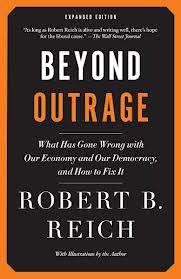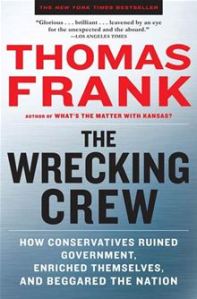
NB The last post is repeated here, so if you have read it, you can scroll down to some lively and extensive supporting material
WE would like to thank folks who have spent time responding to this progressive blog, whether they agree with what they read or not. There seem to be two general categories of reaction: 1. people who actually read the content, respond to what is actually written, whether they agree or have differences, 2. those who just see words like “capitalism” “poor people” , social responsibility, and immediately see “Socialism” or “do-gooder taking my money or some generous rich person’s money and giving to the government.”
If you really read what we have to say, it breaks down into 3 easy to digest bullet points:
1. . So, let’s be clear: There are no simple solutions and there is not a good political party and an evil one, nor is there a contempt for wealth, getting rich, initiative, hard work. The are various groups and political forces that want to demonize government (remember: the people whom the country put in charge of freeing the slaves, educating our children –except for our wealthiest children–they of course go to private schools– clean up the messes made by Big Business and Bankers in 1929, 2008 and points in between).
A. Had Obama not pushed through the stimulus package and, necessary evil, saved the banker’s and big business like GM and AIG’s behinds following Bush’s TARP desperate attempt to undo some of the damage, we would probably have 15% unemployment today, not the modest—no, increasingly robust recovery we are experiencing.
B. Had Obama not pushed through the Affordable Care Act, 40 million Americans would not be on their way to healthcare coverage, people with preexisting medical conditions would be selling their homes and retirement pensions for coverage (a country that has people going to the emergency rooms of hospitals for healthcare (I mean 50 million of those), is and should be a laughing stock, in effect a third world country (those countries may not be able to afford the healthcare for all, this country Can). You folks with 21-25 year olds not in the workforce with their own insurance would be paying for there care out of your pockets.
C. There are other things that would have seemed loony 40 years ago, but are accepted today, like busting teacher’s unions, demonizing school teachers, union busting, tax ceilings for the very rich (we middle class folk pay for that), lower corporate tax rates (and we wonder why the deficit is so bad– IT’S NOT JUST SPENDING, not EVEN JUST SPENDING FOR DEFENSE AT A HIGHER LEVEL THAN THE NEXT 31 COUNTRIES COMBINED)**.
D. Yes, we Do plead guilty to believing that snowballing income inequality is bleeding this country white (not to mention the 2003-12 Iraq war-on a-credit card). We do wanted to see public schools supported and more and better teachers in the classroom. We are healthy that in spite of all the Progressive-bashers, Obama-bashers, the deficit is already beginning to slow a bit and healthcare costs, rising for decades at an alarming rate, are now, already beginning to rise more slowly, this even Before the major 2014 reforms kick in.
OK, WE SAID WE BE BRIEF HERE, SO LET’S MAKE CATEGORIES 2 AND 3 AS PROMISED!!
2. We have been clear that there are some Republicans and PLENTY of “Independents” who support some progressive ideas: healthcare reform, support for public education, an end to anti-labor policies, and we not only welcome them, they are beginning what will be a 3 decade coalition that will only get stronger.George W. Bush did not win the election of 2000 (yes he did become president, he simply did not win either the popular or–except for Supreme Court intervention– the electoral vote). He won very narrowly in 2004, then Obama trounced the Republicans in 2008 and 2012. McCain–veteran, hero, bi-partisan– was Not a weak candidate, nor was Romney. Obama and his ideas and political operation, by no means flawless, were simply better.
We may seem like cheerleaders for some sort of Democratic Renaissance– but not quite so. We are saying that some Republicans are retrenching, the Tea-Party isn’t going anywhere–just getting smaller as a % of the national vote.1 Other Republicans are coming around to supporting some of the practical solutions outlined above. They see what the future looks like, and it does not look like Bush-Reagan-Romney.
Just the facts m’am: 1. the Hispanic vote, including Cubans, went overwhelmingly for the Democrats in 2012 (in the middle of a recession following the catastrophic polices of 2001-2008!), 2. the female vote will only be increasing, and women tend to vote more progressively, as a whole, then men, 3. the black and Asian votes, pretty robust, Not Shrinking, and Not overall conservative. Sorry, we are just the messengers and you do not have to read this blog to know which way the wind is blowing. What we HAVE DONE, that is a bit unusual for “left-progressive” analysts, is call for, at least for now, a coalition of progressives of all political parties, PROBLEM SOLVERS, to end the disgrace that is Washington today (listen up, Mr. McConnell).
No room to argue this here, but let’s throw out some red meat: we will argue that in, say 2030, if the Republican party campaigned for the White House or most of Congress, on the climate change-denying, teacher bashing, Rich over Middle Class policies they have been running on for 20 or so years, they would lose elections not by the current 5-6%/ 332-206 Electoral Vote of 2012. They would lose by 15% for the White House and be very lucky to elect 40 senators or 45% of the House. Rest easy, Republicans and Conservatives: there is no chance of this. The “head on straight– for the most part– Republicans of the Bobby Jindall, Michael Bloomberg, Susan Collins, Chris Christy variety, see that survival will ultimately depend on moving to the center.
3. The WHAT’S THE MATTER WITH KANSAS guy (author Thomas Frank), asked why do many working people vote against their own economic self interest puzzle is reflected in some of the responses to our outrageous call for balancing the budget by taxes as well as spending cuts, people whose kids are probably in public schools struggling to educate their kids, people who are supporting a defense budget above $700 billion (do the math on how much of your tax revenues are going for that), people who most Need healthcare (and if they don’t want it, the rest of us should not be subsidizing their visits to high priced emergencies rooms).
We will be interested in why many in the Red States– farmers, workers, low-mid income folks, really the backbone of this country and certainly the backbone of our armed forces– repeatedly defend the interests of the wealthy (Guys like Warren Buffett, who says he Should be paying more in taxes). One common theme seems to be that luck, the kind of luck not pointed in the direction of the single working mom kid referred to in our June story, plays no role in how well people do. Those who work hard prosper economically and those who prosper economically all work hard. This Tends to be true, but not nearly as true as some of our readers seem to believe. The lower middle class, working guy or woman and family, have little chance to do as well as those who get all of that expensive coaching for their SAT tests. It is a tribute to Karl Rove, FoxNews, and Rush Limbaugh, that so many people actually believe that the majority of the working poor or even the “poor poor”, are that way because they do not work their tails off. If my fellow “next paycheck” readers want to elect leaders and pay the taxes for the folks in gated communities, with lots of expensive toys, Hey that’s your privilege! But not for Me and the 52-53% of the population who elected and re-elected Obama in 2008-12.
Fear not. if you stick with us (and some of you won’t, though we get more readers every day) we will be offering lots of evidence, data, information to back up the points that we are simply asking you to listen to here. And thanks for listening and reading. Also WE NEED TO ANNOUNCE A CHANGE IN OUR READER POSTING POLICY: thoughtful readers who take their valuable time to offer arguments against our positions, Will be posted for all to see (the debates are already underway). We will Not be posting knee jerk, profanity laced, uniformed right wing stuff. There is too much good stuff coming in to give an audience to trash talk: sorry.
**Corporate Taxes as a Percentage of Federal Revenue
1955 . . . 27.3%
2010 . . . 8.9%
Corporate Taxes as a Percentage of GDP
1955 . . . 4.3%
2010 . . . 1.3%
Individual Income/Payrolls as a Percentage of Federal Revenue
1955 . . . 58.0%
2010 . . . 81.5%
Anyone who is serious about closing the US deficit should consider the changes in what corporations pay in taxes and the rise of the deficit. Source:Loophole Land: Time to Reform Corporate Taxes
Demos, APRIL 12, 2011
as cited in blog THE BIG PICTURE– http://www.ritholtz.com/blog/2011/04/corporate-tax-rates-then-and-now/ — Barry Ritholtz
SOME SOURCES
1) tea party support numbers: Just 8% Now Say They Are Tea Party Members
in Politics
Email this ShareThis
ShareThis
· Daily Presidential Tracking Poll
· Generic Congressional Ballot: Republicans 41%, Democrats 38%
· Tea Party, Liberal Are Still Most Negative Political Labels
· 53% of Republicans See Tea Party As Political Plus; 32% of Democrats Say Same of Occupy
· Who Are The Tea Partiers Now?
· Just 37% Now Call Themselves Fiscal Conservatives
Monday, January 07, 2013
Views of the Tea Party movement are at their lowest point ever, with voters for the first time evenly divided when asked to match the views of the average Tea Party member against those of the average member of Congress. Only eight percent (8%) now say they are members of the Tea Party, down from a high of 24% in April 2010 just after passage of the national health care law.
A new Rasmussen Reports national telephone survey finds that only 30% of Likely U.S. Voters now have a favorable opinion of the Tea Party. Half (49%) of voters have an unfavorable view of the movement. Twenty-one percent (21%) are undecided. (To see survey question wording, click here.)
The survey of 1,000 Likely Voters was conducted on January 3-4, 2013 by Rasmussen Reports. The margin of sampling error is +/- 3 percentage points with a 95% level of confidence. Field work for all Rasmussen Reports surveys is conducted by Pulse Opinion Research, LLC. See methodology.
2) Hispanic Vote
Posted on November 15, 2012By Guest columnistPolitics

Hispanics take their civic duties seriously, reliably voting at a high percentage. (Photo/ us2012)
The growing Hispanic vote played an unmistakable role in Tuesday’s election, presenting obvious challenges for conservatives moving forward. Hispanic’s national share of vote, exponentially rising eligible voters, and key-state vote differentials all lead to a clear point: Hispanics are an ever-important part of the electorate that can’t be ignored. The scope of the challenge is broad but there is opportunity ahead for conservatives to engage Hispanics.
Please click here to see HLN’s latest infographic.
Hispanic vote growing
For years, Hispanic activists in the conservative movement have underscored the importance of engaging Hispanics. This past Tuesday more than 11 million Hispanics voted in the presidential election — 10 percent of the national electorate. Just as the white share of vote is declining each election, Hispanics’ share is growing.
Share of the Hispanic Vote
|
|
2012
|
2008
|
2004
|
|
National
|
10%
|
9%
|
8%
|
Sources: The New York Time and the Pew Hispanic Center/ Hispanic vote
Hispanics are the fastest growing minority in the U.S., estimated to grow to 132 million-strong by 2050, making up 30 percent of the country’s population. There are currently 23.7 million Hispanics eligible to vote, a 7.6 million-person increase since just 2004, with 50,000 Hispanics turning 18 every month.
That helps explain why 1.3 million more Hispanics votedon Tuesday than in 2008 while national overall turnout declined significantly. Moreover, from 2004 to 2008, the number of Hispanics who voted increased by 21.65 percent. From 2008 to 2012 the number of Hispanics who voted increased by 11 percent.
Additionally, Hispanics take their civic duties seriously, reliably voting at a high percentage. Between 46.4 – 49.7 percent of eligible Hispanics voted in the last three elections.
Eligible Hispanic Voters
|
|
2012
|
2008
|
2004
|
|
Number of eligible voters
|
23.7 million
|
19.5 million
|
16.1 million
|
|
Number of votes cast
|
11 million
|
9.7 million
|
7.6 million
|
|
%Voted Increase From Previous Election
|
11%
|
21.65%
|
–
|
|
Percentage of Eligible That Voted
|
46.4%
|
49.7%
|
47.2%
|
Source: The Pew Hispanic Center/ Hispanic vote
The swing state problem
Just eight years ago President Bush received nearly half of the national Hispanic vote and 56 percent of it in Florida. Yet on Tuesday, Hispanics voted for President Obama over Gov. Romney 71 percent to 27 percent nationally, with disturbing differentials in key swing states. In Florida, Romney garnered just 38 percent of the vote, compared to McCain’s 42 percent and Bush’s 56 percent. That’s an 18-point drop over 8 years in a state he lost by just 100,000 votes this year. Similar perilous swings exist in the mountain west states of New Mexico and Nevada.
A future red state problem
Conservatives will face an even larger future problem if they don’t engage the Hispanic community, in currently non-competitive presidential states like Texas and Arizona that Romney lost Hispanics by over 40 points in. Just eight years ago, President Bush lost Arizona Hispanics by just 13 points and came within 1-point of winning Texas Hispanics, 50-49. What’s more, since 2004, Arizona’s Hispanic share of the vote has increased from 12 percent to 19 percent and Texas’ has risen from 20 percent to 26 percent since 2004, according to The Pew Hispanic Center and The New York Times. On this current trajectory, how many years until both are presidential swing states?
Breakdown of the Hispanic vote by presidential candidate
|
|
2012
|
2012
|
2008
|
2008
|
2004
|
2004
|
|
|
Obama
|
Romney
|
Obama
|
McCain
|
Kerry
|
Bush
|
|
National
|
71%
|
27%
|
67%
|
31%
|
53%
|
44%
|
|
Arizona
|
77%
|
22%
|
56%
|
41%
|
56%
|
43%
|
|
California
|
72%
|
27%
|
74%
|
23%
|
63%
|
32%
|
|
Colorado
|
74%
|
25%
|
61%
|
38%
|
68%
|
30%
|
|
Florida
|
60%
|
38%
|
57%
|
42%
|
44%
|
56%
|
|
Nevada
|
69%
|
24%
|
76%
|
22%
|
60%
|
39%
|
|
New Mexico
|
64%
|
29%
|
69%
|
30%
|
56%
|
44%
|
|
North Carolina
|
65%
|
34%
|
–
|
–
|
–
|
–
|
|
Texas
|
70%
|
29%
|
63%
|
35%
|
50%
|
49%
|
|
Virginia
|
64%
|
33%
|
65%
|
34%
|
–
|
–
|
Sources: Latino Decisions/ImpreMedia, The New York Time and the Pew Hispanic Center/ Hispanic vote chart
A Hispanic opportunity
The Hispanic community is not a monolithic group and they care about many issues. While they may have broken for Obama, there is opportunity for conservatives to engage the community if they want to win in future presidential races. For example, in a Latino Decisions/ImpreMedia poll of Hispanic voters on the eve of election night, when asked, “Thinking about the 2012 election, what are the most important issues facing the Latino/Hispanic community that our politicians should address?”
Inviting Hispanic business owners to the movement
Moreover, conservatives must leverage the Hispanic community’s entrepreneurial spirit. According to the U.S. Census Bureau, as of 2007, there are upwards of 2.3 million Hispanic-owned businesses in the U.S. – up 44 percent from 2002. As the fastest growing minority business group in the country, Hispanic business owners understand first-hand the need for less burdensome regulations and lower taxes to expand, grow, and hire more workers.
Abandoning myths
On immigration, the myth that all Hispanics want amnesty for undocumented immigrants is just that – a myth. In fact, many Hispanics support sensible immigration reform, but as Americans, they too express concerns about proposals that do not include securing the border. The movement must also ensure that more conservative Hispanics are involved in immigration reform discussions, and put forth proposals that include a guest worker program and overhauling our current visa system. Interestingly, an HLN poll showed that American voters support “allowing children of undocumented immigrants who have been here for years to obtain legal residency status after their honorable discharge from service in the U.S. military” by 83 percent while and 67 percent support “allowing children of undocumented immigrants who have been here for years to obtain legal residency if they graduate from college.”
The last mile – How do you do it?
Candidates must increase their understanding of their constituencies, as well as demographic shifts. Increased understanding should be partnered with strong coalition building efforts at the local level, and among leading Hispanic groups nationally. The movement’s objectives must include long-term, sustainable efforts to engage the Hispanic community on issues affecting them and that concern them the most.
At the Hispanic Leadership Network (HLN), we are putting into action what we advise, by engaging Hispanics on center-right issues that will restore prosperity and opportunity to America. Through communications, grassroots, policy development and interaction with our elected officials at the local and national level, we are well on our way to building the largest network of Hispanic advocates in the country.

Hispanic vote chart by HLN.
Read more: http://www.voxxi.com/hispanic-vote-2012-beyond/#ixzz2bcCDarbX
Moving Democratic
November 9, 2012 10:24 AM
Share on email 5
View Comments


Reporting Tim Kephart
Filed under
Local, News, Politics
Related tags
2012 Campaign, Barack Obama, campaign, Cuba, Cuban, Cuban Vote, Cuban-American, Cuban-American Vote, Florida, Florida Election, Obama, Politics, President Barack Obama, President Obama
Election Returns
CAMPAIGN 2012

Get Answers
1. how do I vote on line Iam outside tht US.
2. Why do people in wheel chairs get to go to the front of the line, when the rest of us needn to wait over 2 hrs ??
3. When will the electoral college vote
4. If I am in line by 6:45pm and the wait time is 1 hour, will I still be able to vote even though the polls close at 7pm?
5. What time will the polls be open tomorrow November 6th? I am in the City of South Miami. Precinct 606.
Ask a Question
MIAMI (CBSMiami) – While Florida still hasn’t finished counting all the ballots from Tuesday’s election, the exit polling from Tuesday’s presidential election is suggesting a major shift in the voting pattern of the Hispanic vote in Florida.
Exit polls of the Cuban-American community in Florida showed a split between Cuba-Americans who were born in Cuba and those born in the United States. Historically, Cuban-American voters have heavily favored the Republican Party since the failed Bay of Pigs invasion in 1961.
According to the Wall Street Journal, Cuban-born voters broke for Mitt Romney by a 55-45 percent margin. However, among Cuban-Americans born in the United States, President Barack Obama carried the group by a 60-40 percent margin.
The Pew Hispanic Center reported Cuban-Americans favored Obama by a 49-47 percent margin. And a Latino Decisions national poll released the day before the election pegged Latino support for Obama at roughly 71 percent.
While 2012 may be an anomaly, Latino voters have been gravitating towards the Democratic Party over the past few elections and if the Democrats keep them on their side, it could begin a fundamental shift in the way campaigns try to capture the Hispanic vote
——————————————————————————————————————————————–
3) Defense spending numbers: although the following data is for defense spending for the top 15, not 32, countries, it is really even more dramatic than the text of the post abover, BECAUSE: it indicates that of the 1.7 trillion $ spent worldwide for defense spending (196 nations), the U.S. spend nearly 700 billion (data from world gold standard in defense statistics, SIPRI, used by Wikipedia and many others), this is almost 40% of the total global expenditures for defense.
Stockholm International Peace Research Institute (SIPRI) Yearbook 2013 which includes a list on the world’s top 15 military spenders in 2012, based on current market exchange rates. The second list is based on the SIPRI military expenditure database for the year 2012, again based on current market exchange rates.. Contents
[hide]
SIPRI Yearbook 2013 – World’s top 15 military spenders[edit source | edit]
|

|
|
The world’s top 5 military spenders in 2012.
Figures sourced from the SIPRI Yearbook 2013.
|
^ SIPRI estimate.
^ The figures for Saudi Arabia include expenditure for public order and safety and might be slightly overestimated.
^ It is possible that the
4) 2000 election statistics (Florida gave Bush a slight technical edge in the electoral college; the recount in Florida was stopped by a 5-4 decision of the US Supreme Court. The decision was termed by the senior minority justice in the decision at the time, John Paul Stevens, graceful in the court’s history. Stevens was a moderately conservative appointee by Republican Pres. Gerald Ford. As the country moved right, he stayed center, then “left center,” as hard right justices were appointed by Republican presidents.
|
|
Presidential
Candidate
|
Vice Presidential
Candidate
|
Political
Party
|
Popular Vote
|
Electoral Vote
|
|

|
George W. Bush
|
Richard Cheney
|
Republican
|
50,460,110
|
47.87%
|
271
|
50.4%
|
|

|
Albert Gore Jr.
|
Joseph Lieberman
|
Democratic
|
51,003,926
|
48.38%
|
266
|
49.4%
|
|

|
Ralph Nader
|
Winona LaDuke
|
Green
|
2,883,105
|
2.73%
|
0
|
0.0%
|
|

|
Patrick Buchanan
|
Ezola Foster
|
Reform
|
449,225
|
0.43%
|
0
|
0.0%
|
|

|
Harry Browne
|
Art Olivier
|
Libertarian
|
384,516
|
0.36%
|
0
|
0.0%
|
|

|
Other (+)
|
–
|
–
|
236,593
|
0.22%
|
0
|
0.0%
|
|

|
Map Key
|
> 40%
|

|

|
|
> 50%
|

|

|
|
> 60%
|

|

|
|
> 70%
|

|

|
|
> 80%
|

|

|
|
Turnout
|
|
|
|
|
|
|
|

 Book Recommendation: BEYOND OUTRAGE: What Has Gone Wrong with Our Economy, and Our Democracy, and How to Fix It
Book Recommendation: BEYOND OUTRAGE: What Has Gone Wrong with Our Economy, and Our Democracy, and How to Fix It











